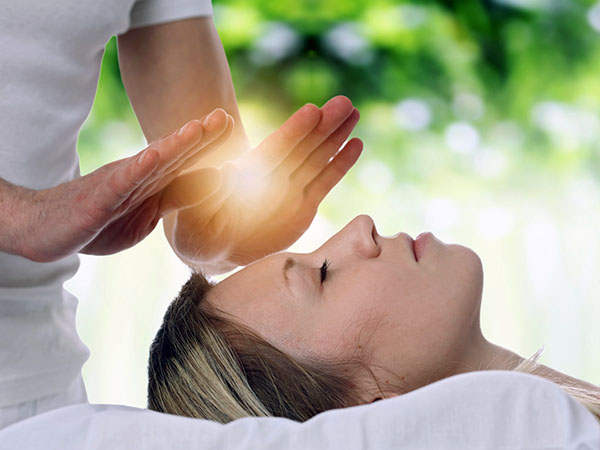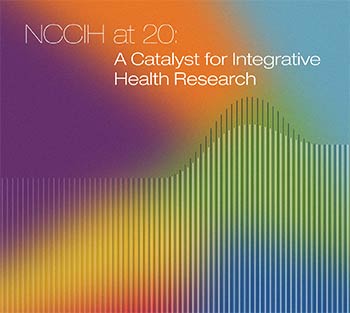By Joseph Perbika
Past religion editor of Wall Street Journal
Kate MacPherson stands beside a message table in Loveland, Co. She is testing the healing power of praying for someone dying of AIDS in San Francisco whom she has never met. With a photograph of the man in view, she moves her hands over an imagined outline of his body.
In her outstretched hands, Ms. MacPherson says, she senses warmth, a connection with God. The patient’s “energy centers are up,” she says. He “could have grown strong, or he may have passed on. Sometimes when you die there is this tremendous burst of energy.”
The post -prayer connection will only be revealed next month when his responses-or lack thereof become part of a research report on remote healing. Ms. MacPherson, a registered nurse, is praying as part of a controlled study run by psychiatrists at the University of California at San Francisco—one of a growing number of attempts to prove whether the healing power of prayer can be tested by science.
Researchers at the University of Arkansas are studying whether human muscle cells respond to prayer from afar. A group of doctors at Temple University is about to begin the study of the effects of prayer on 150 infants at risk of death from neonatal problems. And the U.S. National Institutes of Health, which has never looked at the issue before, is sponsoring a study being conducted at the University of New Mexico on the effects of Catholics, Protestant and Jewish prayer on alcoholics and drug abusers.
How prayer (or “intentionality,” as some scientists call it) became a hot medical topic has in large part to do with patient demand-and money. Insurers and health maintenance organizations have become more willing to fund alternative treatments such as massage and herbal cures, which are cheaper than forms of therapy.
Herbert Benson, a professor at Harvard medical school and author on a book meditation, says he receives five to six calls a week from HMO’s asking about “spirituality and healing.” HMO’s are impressed with emerging research that health-care use is lower among those who pray or meditate, Dr. Benson says. “If spirituality was a drug we wouldn’t be able to make it fast enough,” he says.
Still, critics are appalled that public funds are being spent on prayer studies. “If it’s prayer today, what’s next? Are we going to study the Tooth Fairy or Santa Claus?” asks Annie-Laurie Gaylor, staff investigator for the Freedom From Religion, an atheist group that recently wrote to the Department of Health and Human Service, the NIH’s parent agency , complaining that $28,797 in taxpayer money is being used for the New Mexico study.
Another critic of the prayer research is Gordon Stein, a senior editor at Free Inquiry, a religious magazine with a liberal bent. Studies like the one at the University of New Mexico, he says, “make the assumption that God is sort of a Pavlovian dog. Say a prayer and He or She answers. Moreover, he adds, many of these studies assume that God listens better to Judeo-Christian faiths. “How do we know that these groups have a special link to God and not the Islamics or Buddhists?” he asks.
Richard J. Goss, emeritus professor of biology at Brown University, has this to say about prayer and meditation: “If my doctor prayed for my recovery, I’d consider a malpractice lawsuit.”
Believers in prayer insist that the current studies are legitimate quests rooted in Albert Einstein’s theories that matter and energy are interchangeable. If “people are matter they can interact on an energy basis in endeavors such as prayer,” posits Danial J. Benor, a psychiatrist, author and healing researcher in England. “This is no different than physicists measuring an electron,” reasons Larry Dossey, a Santa Fe N.M. internist and author of books on medicine and healing. “You can’t really see it. You just know under certain conditions it manifests itself.”


NIH says that while true believers have done studies before on the power of prayer there has never been a rigorous scientific look in response to Ms. Gaylor, Allen Trachtenberg acting director of the NIH Office of Alternative Medicine, so no violation of church-state boundaries. “The interdenominational group was specifically asked to make a commitment to pray for recovery and general health,” he wrote. “They were instructed not to pray for any religious conversion.”
Advocates say such projects can be a public service. Every year, four million people visit the Roman Catholic shrine in Lourdes, France: another million make their pilgrimage to the Medjugorge Shrine Bosnia, Herzegovina. Healing schools are dispatching healers who charge for their services. “We would like to be able to say, yes spend your money, or no don’t waste it,” says Elizabeth Targ, Assistant Professor of Psychiatry at UC San Francisco.
The current academic interest in prayer received an impetus in the mid-1980’s, when cardiologists Randolph Byrd recruited a group of born-again Christians to pray in a study of 393 coronary patients at San Francisco General Hospital. Results, reported in the Southern Medical Journal, showed that the prayed-for group was much less likely to require antibiotics or develop fluid in the lungs, as the result of faulty heart action. No one who as prayed for needed breathing machines; twelve in the control group did.
For the San Francisco AIDS experiment, twenty praying people who are believers in healing power of prayer were recruited to send intentions from cities like New York and Washington, DC. Half of the twenty patients got intentions; the other half didn’t, distance was supposed to weed out the effects of touch. “When a healer lays hands on someone, that in itself can have a relaxing effect, a kind of power of suggestion that could skew the results,” Dr. Targ.
Only patients with advanced AIDs were chosen for the study. Researchers were looking for unusual changes in T-cell count, a measurement of immunity. The study was paid for by the Institute of Noetic Sciences in Sausalito, Ca., which promotes alternative cures.